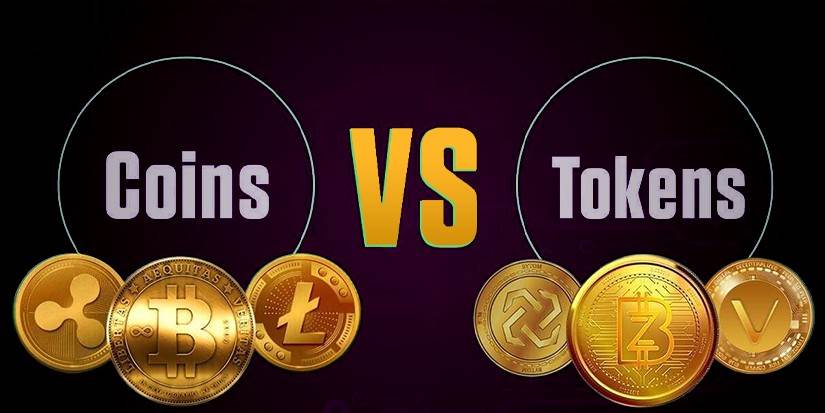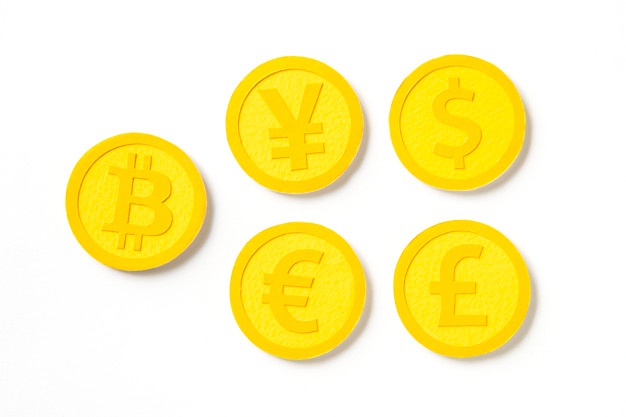In this article we will take a look at what crypto coins and tokens are and the differences between them

To understand the crypto markets better, it’s easiest to divide cryptocurrencies into two groups: coins and tokens. The words “Crypto Coins” and “Token” are often misunderstood by people who are new to or interested in cryptocurrency.
Many people think that tokens and crypto coins are the same thing. They aren’t, though. At the most basic level, all coins can be thought of as tokens, but not all tokens can be thought of as crypto coins.
In this article, we will be looking at what they both means? What are the factors that determine which is what?
What Are Crypto Coins?
Coins are any digital currency that has its own blockchain and can be used by itself, like Bitcoin.
These cryptocurrencies are built from scratch, and the network as a whole is made with a specific goal in mind. For example, Bitcoin is a safe way to store value that can’t be censored and has a fixed monetary policy.
Bitcoin’s native token, BTC, or bitcoins, is the most liquid cryptocurrency on the market and has the highest market cap and realised market cap in the cryptocurrency sector.
Usually, coin projects take ideas from old technologies or other cryptocurrencies and combine them into a new network that serves a certain purpose.
Ether (ETH), which is part of Ethereum, is another type of coin. It is the native coin of a platform for making general-purpose computer programmes that run on a decentralised blockchain called smart contracts.
Ethereum doesn’t focus on financial data. Instead, it focuses on programme data, which can be about anything from games to social media. Ether is used to send and receive, manage assets, pay gas fees, and interact with decentralised applications (dApps) on the network.
What Is A Token?

A token is a coin that is based on a blockchain that already exists. They are any digitally transferred asset between two people in the Blockchain network.
Tokens are part of smart contract platforms that let users create and manage tokens on the main blockchain.
Using smart contracts, projects would build an application on Ethereum and give a native token that could be used in that application. In this way, they could get money directly from ETH investors.
Tokens are a special part of the cryptocurrency market because they can be used as “utility” tokens within the ecosystem of an app to reward certain behaviour or pay fees.
For example, the MakerDAO dapp on Ethereum uses the popular ERC-20 token Dai. MakerDAO is a way for people to use Dai, which is designed to access credit instruments like lending.
ERC-20 tokens, like Dai, can be traded for any other ERC-20 token or other Ethereum-based standards (such as ERC-721), including the ETH coin.
The Most Popular Blockchains For Tokens Development
Every blockchain can have its own standard for tokens, and sometimes it can have more than one. Ethereum, for example, has several token standards, such as ERC-10, ERC-20, and ERC-721.
If we talk about the most common types of token standards for advanced token development, they are:
- ERC-20 (Ethereum)
- TRC-20 (TRON blockchain)
- BEP-20 (Binance Smart Chain)
The most popular blockchains for making crypto tokens are Ethereum, Binance, and TRON. The token standards they use are ERC-20, BEP-20, and TRC-20, in that order.
BEP20 – Token on Binance chain starts with bnb136ns6lfw4zs5hg4n85vdthaad7hq5m4gtkgf23
ERC20 – Token on Ethereum chain starts with 0x0e806cea8e5beba6df97354ef7f22b66c5a2ce82
TRC20 – address starts with TWsVAb9EWAgKdumTD7XoEdkvs7AoyvkgN7
1. ERC20
ERC-20 is the most popular standard for tokens ever. Most of the tokens you see on CoinMarketcap.com are Ethereum-based ERC20 tokens.
ERC-20 is also one of the oldest and most trusted standards for making tokens.
Features Of ERC20
- ERC20 token is easy and affordable
- The tokens are fast, with efficient quick transaction confirmation.
- Very secure and come with dedicated wallets.
2. BEP20
BEP-2 and BEP-20 are not the same. These are two different rules that Binance has for tokens. BEP-2 is linked to the Binance Chain, while BEP-20 is a standard token for the Binance Smart Chain (BSC).
BEP-20 is the main token standard for the Binance Smart Chain, which means that all tokens on the BSC are automatically based on the BEP-20 standard. BEP-20 sets out the rules for how a BEP-20 token can be used, moved, approved, and managed.
All BEP-20 tokens are based on the Binance Smart Chain, which is a blockchain network made by Binance to run smart contracts and decentralized applications (DApps). The BSC lets developers make decentralized apps that use smart contracts.
Features Of BEP20
- Compatibility with BEP-2 ERC-20 tokens
- Support of the Binance Exchange
- Easy swapping with BEP-2 tokens
- Supported by many wallets
3. TRC20
TRC20 is a standard for how token made on the TRON blockchain should be issued and managed. The TRC20 standard sets the rules that every token in the network must follow.
These include the rules for how new tokens are given out, how a token transfer is done and approved, how tokens are sent and received, and more.
All tokens on the TRC20 network will be supported by specific digital wallets and can be swapped, transferred, and shared as long as they follow the rules set out in the TRC20 contracts, such as totalSupply(), balanceOf(), transfer(), approve(), transferFrom(), and allowance() ().
TRC20 tokens can also follow the rules for options, such as the ones for Token Name, Token Abbreviation, and Token Precision.
Features Of TRC20
- interact with all other tokens and apps created on the TRON network
- efficient in terms of fast transaction speed and low cost
- All tokens on the TRC20 network can be supported by specific digital wallets
Difference Between ERC20, BEP20, TRC20
| S/N | ERC20 | BEP20 | TRC20 |
| 1 | ERC20 tokens are based on the Ethereum blockchain | BEP20 tokens are built on BSC | TRC20 tokens are based on the TRON blockchain. |
| 2 | The Proof of Work (Proof) algorithm is still used by the Ethereum network. | Binance Smart Chain uses a Proof of Staked Authority (or PoSA) system that was made just for it. | Delegated Proof of Stake (DPoS) is used in TRON |
| 3 | 15-second block processing time | 3 second block processing time as compared to Ethereum’s 15-second block time | Block processing time of 3 seconds per block |
Which Is Better?
The Binance Smart Chain is the clear winner between the three most popular blockchain networks for token development because it is fast, efficient, and doesn’t cost much.
Binance has found a way to keep the transaction fee low even as the number of transactions goes up. This is in contrast to Ethereum, where the transaction fee only goes up over time.
Summary
ERC-20 is a technical standard for smart contracts on the Ethereum blockchain for tokens.
BEP 20 represents a token standard on Binance smart chain.
TRC 20 is a token standard on TRON network
This is all you need to understand:
- ERC20 – Ethereum chain
- BEP 20 – Binance smart chain
- TRC20 – TRON Chain
Difference Between Crypto Coins And Tokens

A coin is usually part of a blockchain and is used to buy and sell money and store value. A token is almost the same, but it tends to use the blockchain of another coin.
Take Ethereum, which is a blockchain, as an example. Ether is its own coin. But this blockchain is also used by other tokens like BAT and Loopring.
The blockchain takes care of crypto coin transactions, and smart contracts are used to trade tokens.
Because they are built on different, non-standard code protocols, coins can only be traded with each other through cryptocurrency exchanges.
On the other hand, tokens on Ethereum (like ERC-20) can be traded between each other easily through internal applications because they are built on standardised code protocols.
This article will broaden your knowledge on Token Standards and ERC20 and BEP20
